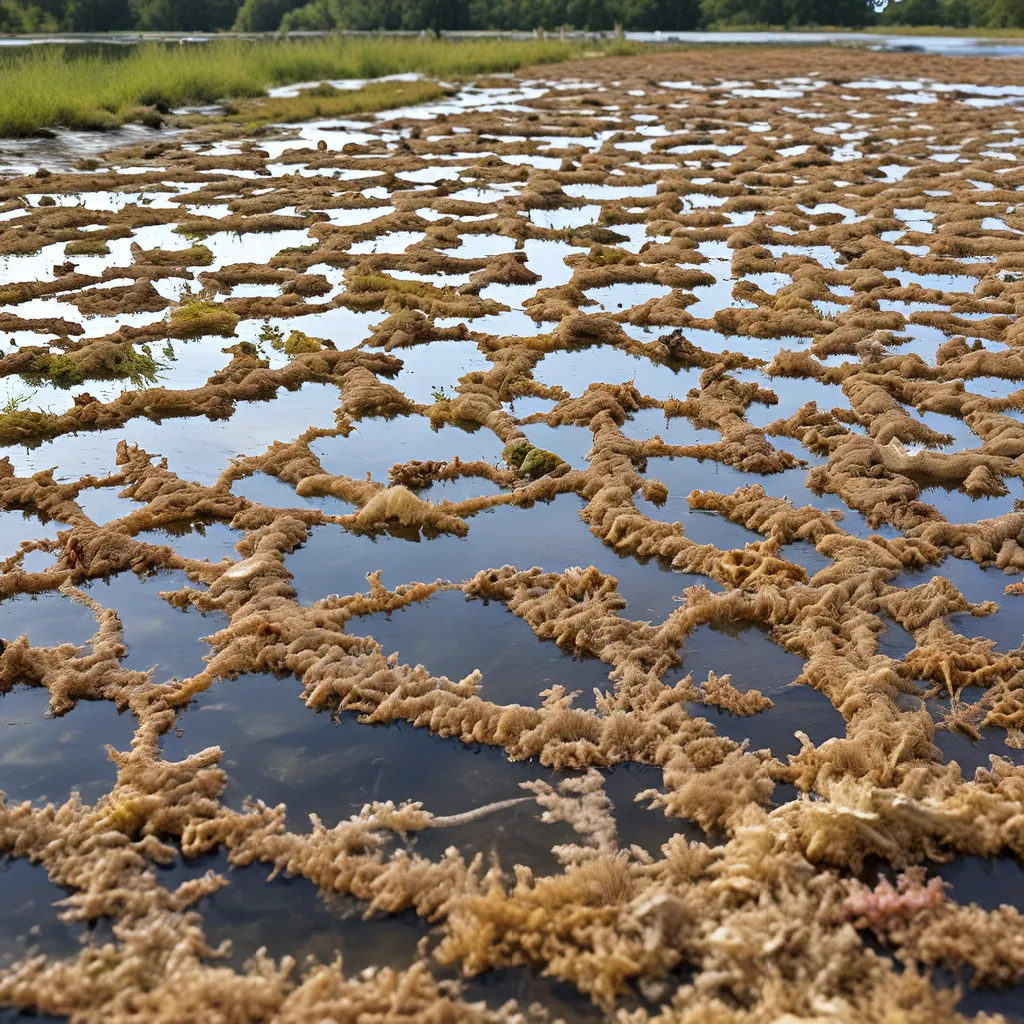
As someone who’s always been fascinated by the intersection of technology and environmental sustainability, I’ve been keeping a close eye on the advancements in biofilm-based wastewater treatment. It’s a topic that’s been generating a lot of buzz in the industry, and for good reason. In this article, I’ll take you on a deep dive into the world of biofilm-based technologies, exploring how they’re revolutionizing the way we approach wastewater treatment.
The Importance of Wastewater Treatment
Let’s start with the basics. Wastewater treatment is a critical process that ensures the safe and responsible management of the water we use in our daily lives. From the water we flush down our toilets to the runoff from our industrial facilities, it all needs to be properly treated before it can be safely discharged back into the environment.
Without effective wastewater treatment, we’d be facing a host of environmental and public health issues. Untreated wastewater can contaminate our waterways, harm aquatic ecosystems, and even pose a risk to human health. That’s why it’s so important that we continually explore new and innovative technologies to improve the efficiency and effectiveness of wastewater treatment.
Exploring the Role of Biofilms
One of the most promising developments in the world of wastewater treatment is the growing focus on biofilm-based technologies. But what exactly are biofilms, and how do they fit into the wastewater treatment equation?
Biofilms are complex communities of microorganisms, often bacteria, that attach themselves to surfaces and form a protective matrix. In the context of wastewater treatment, these biofilms can be harnessed to break down and remove various contaminants from the water.
Studies have shown that biofilm-based technologies can be particularly effective in treating industrial effluents, offering enhanced wastewater treatment and even the potential for electricity generation.
Advantages of Biofilm-Based Technologies
So, what makes biofilm-based technologies so compelling for wastewater treatment? Here are some of the key advantages:
Improved Efficiency: Biofilms are highly efficient at removing a wide range of contaminants, including organic matter, nutrients, and even heavy metals. This can lead to significant improvements in the overall quality of the treated wastewater.
Enhanced Resilience: Biofilms are inherently more resilient than traditional wastewater treatment methods, as they can adapt to changing environmental conditions and resist the impact of toxins or other disruptive factors.
Reduced Energy Consumption: Biofilm-based technologies often have lower energy requirements compared to conventional wastewater treatment processes, making them a more sustainable and cost-effective solution.
Potential for Resource Recovery: In some cases, biofilm-based systems can even be leveraged to recover valuable resources, such as energy or nutrients, from the wastewater stream.
The Rise of Biofilm-Based Technologies
With these advantages in mind, it’s no wonder that biofilm-based technologies have been gaining traction in the wastewater treatment industry. Let’s take a closer look at some of the specific technologies that are making waves:
Moving Bed Biofilm Reactors (MBBRs)
One of the most widely adopted biofilm-based technologies is the Moving Bed Biofilm Reactor (MBBR). In an MBBR system, the wastewater flows through a reactor filled with small, lightweight carrier elements that provide a surface for the biofilm to attach and grow. The constant motion of these carrier elements ensures that the biofilm is continuously exposed to the wastewater, enhancing the treatment process.
Research has shown that MBBRs can be highly effective in treating municipal wastewater, offering improved nutrient removal and reduced sludge production compared to conventional activated sludge systems.
Membrane Bioreactors (MBRs)
Another innovative biofilm-based technology is the Membrane Bioreactor (MBR). In an MBR system, the biofilm is combined with a membrane filtration process, allowing for the effective separation of treated water from the biomass. This results in a high-quality effluent that can be safely discharged or even reused for various applications.
Recent studies have highlighted the potential of MBRs in treating a variety of industrial effluents, including those from the dairy, textile, and pharmaceutical industries.
Anaerobic Biofilm Reactors
While most of the focus has been on aerobic biofilm-based technologies, there’s also growing interest in anaerobic biofilm reactors. These systems leverage the unique capabilities of anaerobic microorganisms to break down organic matter and generate valuable byproducts, such as biogas.
Researchers have found that anaerobic biofilm reactors can be highly effective in treating high-strength industrial effluents, offering the potential for both wastewater treatment and energy recovery.
The Future of Biofilm-Based Wastewater Treatment
As you can see, the world of biofilm-based wastewater treatment is a fascinating and rapidly evolving field. And the future looks even brighter, with ongoing research and development paving the way for even more innovative solutions.
One area that’s particularly exciting is the potential for integrating biofilm-based technologies with other treatment processes, such as advanced oxidation or electrochemical methods. By combining different approaches, we may be able to create even more efficient and versatile wastewater treatment systems.
Another promising avenue is the exploration of novel biofilm-forming microorganisms and the optimization of their performance in various treatment applications. As our understanding of these microbial communities continues to deepen, we may uncover new ways to harness their unique capabilities.
It’s also worth noting that the sustainability of biofilm-based technologies is a key consideration. As we strive to reduce our environmental impact, it’s essential that these systems are designed with energy efficiency, resource recovery, and overall environmental friendliness in mind.
Conclusion: Embracing the Biofilm Revolution
As I reflect on the exciting advancements in biofilm-based wastewater treatment, I can’t help but feel a sense of optimism. These technologies hold the potential to transform the way we manage our wastewater, paving the way for a more sustainable and environmentally responsible future.
If you’re interested in learning more about how Alpha Wastewater can help you harness the power of biofilm-based technologies for your wastewater treatment needs, I encourage you to explore our website or reach out to our team. Together, we can be part of the biofilm revolution and make a real difference in the way we steward our precious water resources.